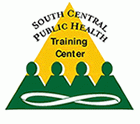
Health Communication
Course Description:
This course covers general steps to planning a health communication intervention, as well as how to apply health communication theory when promoting behavior change. Social marketing principles are introduced, in addition to steps to reduce the literacy burden that often restricts health communication.
This course includes four modules:
Module 1: An Introduction to Health Communication
This module defines health communication and the 4 main components of health communication, including: source, message, channel, and receiver. Diagrams demonstrate how these components interact. Using breastfeeding as an example, the module reviews how you can use health communication components to promote healthy behaviors. The P-Process is introduced, and the ‘Development & Testing’ portion of the process is further demonstrated through the use of tailoring and framing to develop a clear message. This module also discusses several challenges that may arise when working in the area of health communication.
Module 2: Health Communication and Theory
This module explains why theory is important in terms of planning a health communication campaign. Then it describes in depth three popular behavioral theories and how they can be applied to planning a health communication campaign geared at promoting breastfeeding. The three theories discussed include the Theory of Planned Behavior, the Social Learning Theory, and the Transtheoretical Model.
Module 3: Health Literacy
This module defines health literacy and goes over the various tasks that involve being health literate. These tasks range from being able to fill out a medical form to being able to calculate dosages for medicine. The populations that are especially vulnerable to low health literacy rates are discussed, as well as the outcomes of having low health literacy. Next, many approaches to improving low health literacy are examined, such as following the Healthy People 2020 objectives and speaking in plain language. The SAM instrument is also introduced. Lastly, low health literacy is shown to impact decisions to breastfeed.
Module 4: A Brief Intro to Social Marketing
This module begins by defining social marketing and introducing the 4 P’s. A breastfeeding commercial is shown, and the audience is asked to come up with potential descriptions of the 4 P’s for that campaign. Then the differences between social marketing and commercial marketing are discussed. The four types of behavior change and the three various approaches to social marketing are described and demonstrated through breastfeeding examples.
Each module includes video content, review questions, and additional activities.
Target Audience
Academic Faculty/Staff, Federal Government Employees, State Government Employees, Local Government Employees, Non-Government Employees and Students
Learning Objectives
Module 1
- Define health communication
- Understand the different components of communication and how they interact
- Understand the steps to planning a health communication program
- Use the skills of tailoring and framing in health communication
- Identify the challenges associated with health communication
- Understand some behavioral theories and how they affect the way individuals make decisions regarding their health
- Have the skills to apply the components of behavioral theories to make more effective campaign messaging
Module 2
- Understand some behavioral theories and how they affect the way individuals make decisions regarding their health
- Have the skills to apply the components of behavioral theories to make more effective campaign messaging
Module 3
- Be able to understand the nature and consequences of low health literacy on a person’s health
- Have the skills to reduce and assess the literacy level of health information materials and websites
Module 4
- Have a basic understanding of social marketing
- Be able to identify several key features of social marketing
Instructor:
Mary Amelia Douglas-Whited
This course was developed by the Mary Amelia Douglas-Whited Community Women's Health Education Center. To learn more about the Center, click here.
Available Credit
- 2.00 Participation/CETulane Professional and Continuing Education (PaCE) awards 2.00 hour(s) of credit for completing Health Communication
Price
Required Hardware/software
System Settings
This course is designed to work most effectively if your computer and internet connection meet certain minimal requirements. This course can be accessed using a Windows 10 PC or a Mac with High Sierra1, Mojave, or Catalina. Pop-up blockers should be disabled when viewing the course. Internet Explorer 11 (for Windows 10), or the current version of Google Chrome, Mozilla Firefox, or Apple Safari (for Windows 10 and or Mac) is required. Many of our courses require Java and JavaScript enabled.
Links to External Websites
Links to websites outside this course will open in a new window or tab. Some browsers may minimize the course window. If this occurs, maximize the course window to return to the course.
Adobe Acrobat Reader (for desktops and laptops)
Adobe Acrobat Reader is required to access some documents in this course. If you need to download a free copy of Acrobat Reader, click here.
Internet Connection Speed
A minimum download speed of 1.5 Mbps is recommended for an optimal experience, which is commonly the speed associated with a basic DSL or a cellular/satellite connection. A faster connection, such as cable or fiber service, with further enhance your online experience. A Wi-Fi connection is generally acceptable, but it is dependent upon one of the two services mentioned above. You can check your internet connection speed at http://www.speedtest.net/.

 Facebook
Facebook Twitter
Twitter LinkedIn
LinkedIn Forward
Forward